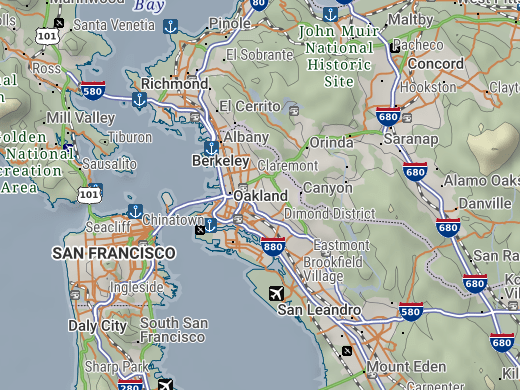Newborns and Children SACHDNC acted on the HHS 2010 recommendation and outlined a strategy for routine screening of newborns to improve detection of CCHD. Letter to health care providers about this change PDF.
 Newborn Pulse Oximetry Screening Which Algorithm Is Best American Academy Of Pediatrics
Newborn Pulse Oximetry Screening Which Algorithm Is Best American Academy Of Pediatrics
Repeat pulse ox measurements in one hour PASS Pulse ox of 95 or more in RH or foot AND difference of 3 or less between the two.

Cchd screening newborn. Screening Protocol Diagram Critical Congenital Heart Disease Screening Program. Determine the performance of the American Academy of Pediatrics AAP critical congenital heart disease CCHD newborn screening algorithm and the impact of an alternative algorithm. 15 countries had pilot projects including the largest CHD screening study ever published - 120000 newborns in China.
This rule went into effect on Thursday July 3 2014. The primary recommendation is that screening for CCHD for all newborns in the regular nursery should be conducted using pulse oximetry on the right hand and foot and to utilize the following screening algorithm. Newborn Critical Congenital Heart Disease Screening Program Screening for Critical Congenital Heart Disease CCHD by pulse oximetry was added to the panel of screened conditions by emergency rule.
CCHD newborn screening interpretation 73700-7. Together screened over 180000 newborns in studies. This test estimates the amount of oxygen in a babys blood.
Newborns with low blood oxygen are at higher risk for CCHD. There is strong evidence that performing newborn pulse oximetry screening after the first 24 hours of life may help to detect more than 1200 neonates in the United States each year with CCHD. 73697-5 Oxygen saturationpreductal-oxygen saturationpostductal Mass fraction difference in Bldpreductal and Bldpostductal.
1 Critical CHDs CCHDs are life threatening and account for nearly 25 of all CHDs. Pulse oximetry screening for CCHD has been demonstrated to be reasonable to implement and seems to. The Lancet Apr 2014.
This test measures the amount of oxygen in a babys blood. CCHD may be found before birth with a prenatal ultrasound. Recommended Uniform Screening Panel for newborns a move backed by the Academy.
Studies dated back to 20022003. Early Detection of CCHD. During screening a special piece of equipment called a pulse oximeter measures how much oxygen is in your babys blood.
NJ and Indiana implement pre-RUSP HRSA awards 6 demonstration grants as part of CCHD screening rollout. In 2011 federal health authorities added pulse oximetry screening for CCHD to the US. Newborns with oxygen saturation of 95 percent or more in the right hand or foot.
Newborn screening for critical CHDs involves a simple painless bedside test called pulse oximetry in which sensors are placed on the babys skin. If detected early infants affected with CCHD can often be treated and lead longer healthier lives. Video Abstract OBJECTIVES.
Newborn screening for CCHD is done by measuring the oxygen levels in your babys body. 2 Babies sent home with an undetected heart defect are at risk of serious complications within the first few days or weeks of life requiring emergency care 3 and even at risk of dying. Provider A completes and.
RETEST Pulse ox of 90-94 in BOTH the RH and foot OR a difference of 4 or more between the RH and foot Action. Low levels of oxygen in the blood can be a sign of a critical CHD. CCHD occurs in one in every 500 births and screening can help detect and treat it early.
Low levels of oxygen in the blood can be a sign of a critical CHD. Examination and Screening CCHD can be identified as a result of either prenatal ultrasound or postnatal physical exam but is missed in a small percentage of births Detection rates for CCHD. Scenario 1 A baby is born at Provider A who performs the CCHD pulse oximetry screening.
CCHD newborn screening protocol used Type CCHD protocol. Congenital heart defects CHDs are the most common birth-related malformation. To learn more about this process visit the Pulse Oximetry Screening page.
The baby has a positive screen and diagnostic testing is ordered by Provider A. The 28-page report recommends that newborn screening be done with motion-tolerant pulse oximeters that report functional oxygen saturation have been validated in low perfusion conditions have been cleared by the FDA for use in newborns. 73696-7 Oxygen saturation in Blood Postductal by Pulse oximetry.
Newborn CCHD screening uses a device called a pulse oximeter to measure oxygen in the babys blood. The test is done using a machine called a pulse oximeter with sensors placed on the babys. Pulse oximetry newborn screening is a non-invasive test that measures how much oxygen is in the blood and can help to identify babies that may be affected with CCHD before they leave the newborn nursery.
Provider A confirms a CCHD condition based on test results. Screening was performed on term infants without a known CCHD diagnosis at or near 24 hours of age at a tertiary birth hospital by using the AAP algorithm from. Newborn screening for critical CHDs involves a simple bedside test called pulse oximetry.
After birth newborn CCHD screening usually happens when a baby is between 24 and 48 hours ol d. Newborn screening using pulse oximetry can identify some infants. 25-50 -Postnatal newborn physical exams.
Detecting CCHD in newborns.
